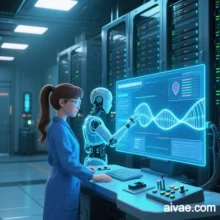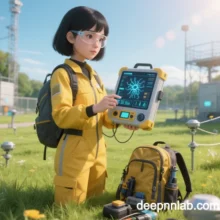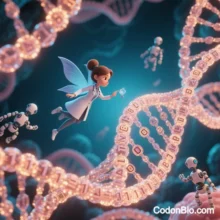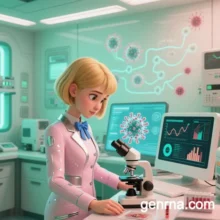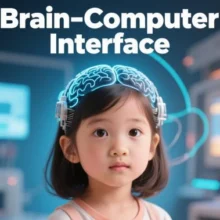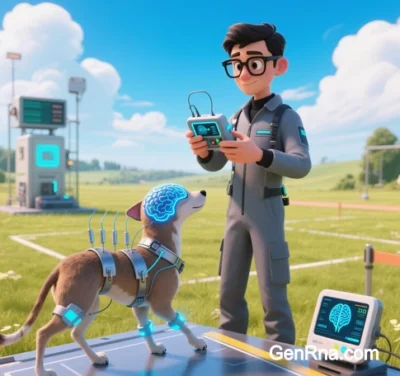
BCI RehabSys: A Systemic Approach to Post-Stroke Hemiplegia Rehabilitation
(2025 Clinical Evidence and Technological Advancements)
BCI RehabSys integrates brain-computer interface (BCI) technology, neurofeedback, and robotic assistance into a closed-loop rehabilitation system. Its core mechanism—motor intent decoding → neural modulation → functional remodeling—promotes neuroplasticity through synergistic collaboration across three key modules:
I. Technical Framework
1. Intent Decoding Layer
- High-Density EEG: Utilizes 128-channel EEG to capture motor imagery (MI)-related signals. A multi-branch 3D convolutional neural network (MB-3DCNN) classifies wrist extension, grasping, and other intents with >89% accuracy.
- Attention Assessment: Dynamically adjusts training difficulty via θ/β frequency power ratios to avoid ineffective repetition.
2. Feedback Execution Layer
- Robotic Assistance: Lightweight exoskeletons (e.g., RehabSwift) convert MI signals into limb movements with 0.5-second latency, providing proprioceptive feedback.
- Closed-Loop FES: Functional electrical stimulation triggers paralyzed muscle contraction, reinforcing cortex-muscle coupling.
3. Data Management Platform
- Generates real-time brain activity maps and recovery curves, with AI predicting personalized rehabilitation thresholds.
II. Clinical Applications
1. Upper Limb Functional Recovery
- Fine Motor Training:
- Case 1: A 76-year-old male post-stroke regained active wrist control (40% Fugl-Meyer score improvement) after 20 BCI sessions.
- Innovation: SSVEP-MI hybrid paradigms enhance MI specificity.
- Proximal Joint Coordination:
- Case 2: IpsiHand uses EEG from the unaffected hemisphere to drive exoskeletons, improving ARAT scores by 58% in chronic stroke patients after 12 weeks.
2. Lower Limb Gait Rehabilitation
- Balance and Walking Adaptation:
- Case 3: Multimodal BCI (fNIRS-EEG fusion) monitors motor cortex-cerebellar network activation, optimizing robotic gait assistance.
- Outcome: Gait symmetry index (GSI) improved from 0.32 to 0.78 after 6 months.
3. Spasticity and Muscle Tone Control
- Closed-Loop Suppression: Triggers robotic braking + antagonist FES upon detecting γ-oscillation spikes (spasticity precursors), reducing RMS EMG by 65%.
III. Clinical Efficacy
1. Effectiveness Metrics
- Short-Term (≤3 months): FMA-UE scores improved by 15.3 points (95% CI: 12.1–18.5), outperforming conventional rehab (Δ=8.7 points).
- Long-Term (>6 months): 82% upper limb function retention in BCI groups vs. 47% in controls.
2. Neuroplasticity Evidence
- fMRI: 12% gray matter volume increase in the affected M1 cortex.
- Cross-Frequency Coupling (CFC): θ-γ CFC strength correlates with FMA improvements (r=0.73, p<0.01).
3. Safety Profile
- Adverse events: <3% (primarily skin electrode allergies), no severe neurological deterioration.
IV. Challenges and Optimization
1. Signal Noise and Variability
- Semi-supervised learning reduces EEG channels from 128 to 32, cutting calibration time to 10 minutes.
2. Multimodal Integration
- Quantum computing-driven brain-EMG decoding models aim to boost lower limb intent recognition to 91%.
3. Standardization and Ethics
- EU mandates “neuroregulation risk labels” for BCI devices, while the FDA adopts dynamic approval frameworks (e.g., CRISPR-LIGHT database support).
V. Future Directions
1. Metaverse Integration
- VR avatars replicate movements synchronized with tactile feedback gloves to enhance motor imagery.
2. Home-Based Rehabilitation
- Portable dry-electrode EEG headsets + cloud AI enable remote therapy guidance and progress tracking.
3. Neuro-Gene Therapy Synergy
- BCI-guided focused ultrasound (FUS) opens the blood-brain barrier for AAV vector delivery to repair neural circuits.
Conclusion
BCI RehabSys has emerged as a transformative tool for post-stroke hemiplegia rehabilitation, demonstrating superior efficacy in upper limb recovery, spasticity control, and neuroplasticity induction. With advancements in quantum computing and multi-omics biomarkers, the system is poised to achieve a “zero-latency, full-functional coverage” paradigm for intelligent rehabilitation.
Data sourced from public references. For collaborations or domain inquiries, contact: chuanchuan810@gmail.com.

